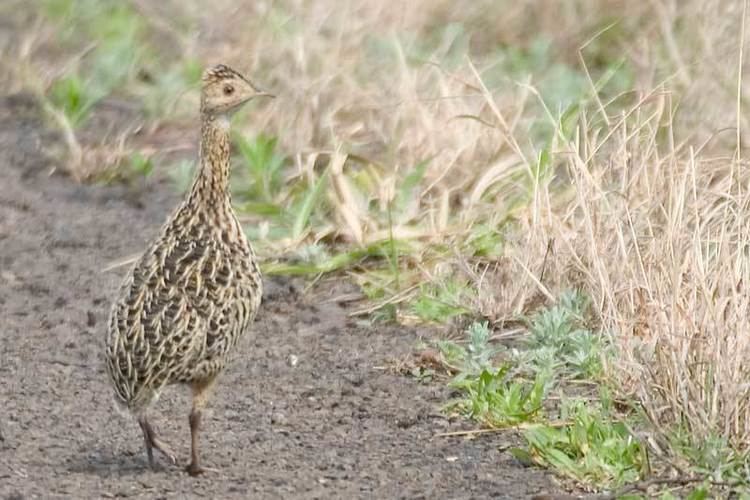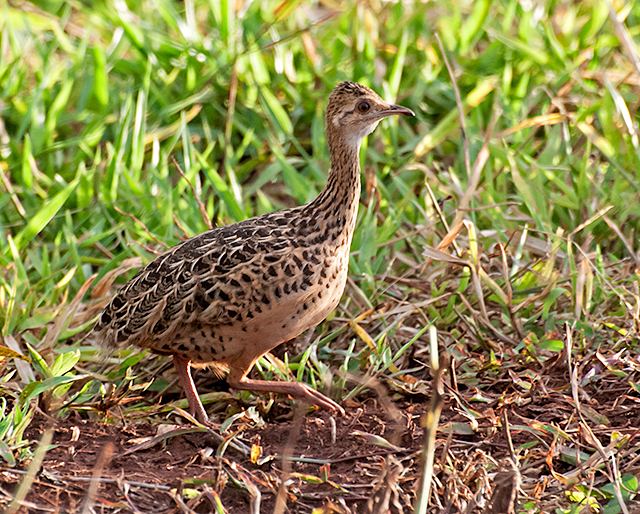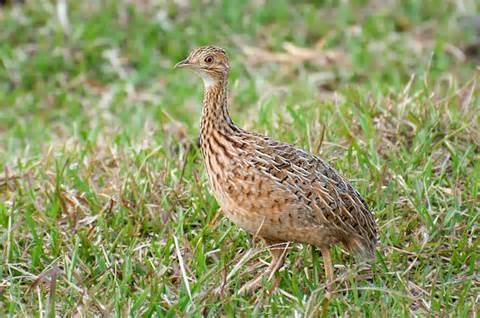Phylum Chordata Rank Species | Family Tinamidae Scientific name Nothura maculosa Higher classification Nothura Order Tinamou | |
 | ||
Similar Nothura, Tinamou, Red‑winged tinamou, Rhynchotus, White‑bellied nothura | ||
Spotted nothura nothura maculosa temminck 1815
The spotted nothura (Nothura maculosa) is a species of tinamou. This bird is native to grassy habitats in eastern and southern Brazil, Paraguay, Uruguay, and eastern and northern Argentina.
Contents
- Spotted nothura nothura maculosa temminck 1815
- Perdiz inamb com n spotted nothura nothura maculosa
- Description
- Behavior
- Feeding
- Reproduction
- Taxonomy
- Subspecies
- Range
- Habitat
- Conservation
- References

Perdiz inamb com n spotted nothura nothura maculosa
Description
The spotted nothura is approximately 24 to 25.5 cm (9.4–10.0 in) in length. The upper parts are brown with streaked buff. The under parts are buff streaked with black and brown on the breast, with barring to the flanks. Its crown is black streaked with buff and the throat is white. The overall hue in colour varies greatly over its range; in part caused by the differences in soil at the specific localities. It and the closely related Chaco nothura, N. chacoensis, are the only nothuras with barring to both webs of the primaries. The legs are dull yellowish-grey or brown.
Behavior
The call of the spotted nothura is a series of brief high-pitched notes.
Feeding

The spotted nothura eats plants, typically seeds, and animal matter. In Argentina they seem to eat more of the animal matter then they do in other locations.
Reproduction

This species can reproduce rapidly, as the female is mature within 2 months and can have five to six broods per year. The male does not mature as fast. The male will incubate the eggs and raise the chicks. Like most tinamous, its eggs have a spectacular glossy porcelain-like shell. This is colored a rich maroon or chocolate brown in this species. The clutch contains 4-6 eggs.
Taxonomy
All tinamou are from the family Tinamidae, and in the larger scheme are also ratites. Unlike other ratites, tinamous can fly, although in general, they are not strong fliers. All ratites evolved from prehistoric flying birds, and tinamous are the closest living relative of these birds.
Coenraad Jacob Temminck first identified the spotted nothura from a specimen from Paraguay, in 1815.
Subspecies

The spotted nothura has eight currently recognized subspecies. They are not well-distinguished and almost form a cline that varies north to south according to Gloger's and Bergmann's Rules.
Range
It occurs in eastern and southern Brazil (excluding the Mata Atlântica and planalto uplands along the coast), Paraguay, Uruguay, and Argentina.
Habitat
It lives in dry savanna habitat up to 2,300 m (7,500 ft), and temperate grassland, as well as pasture land.
Conservation
The IUCN list this tinamou as Least Concern, even though it is avidly hunted, due to its fast reproduction rate. It has an occurrence range of 3,900,000 km2 (1,500,000 sq mi).
